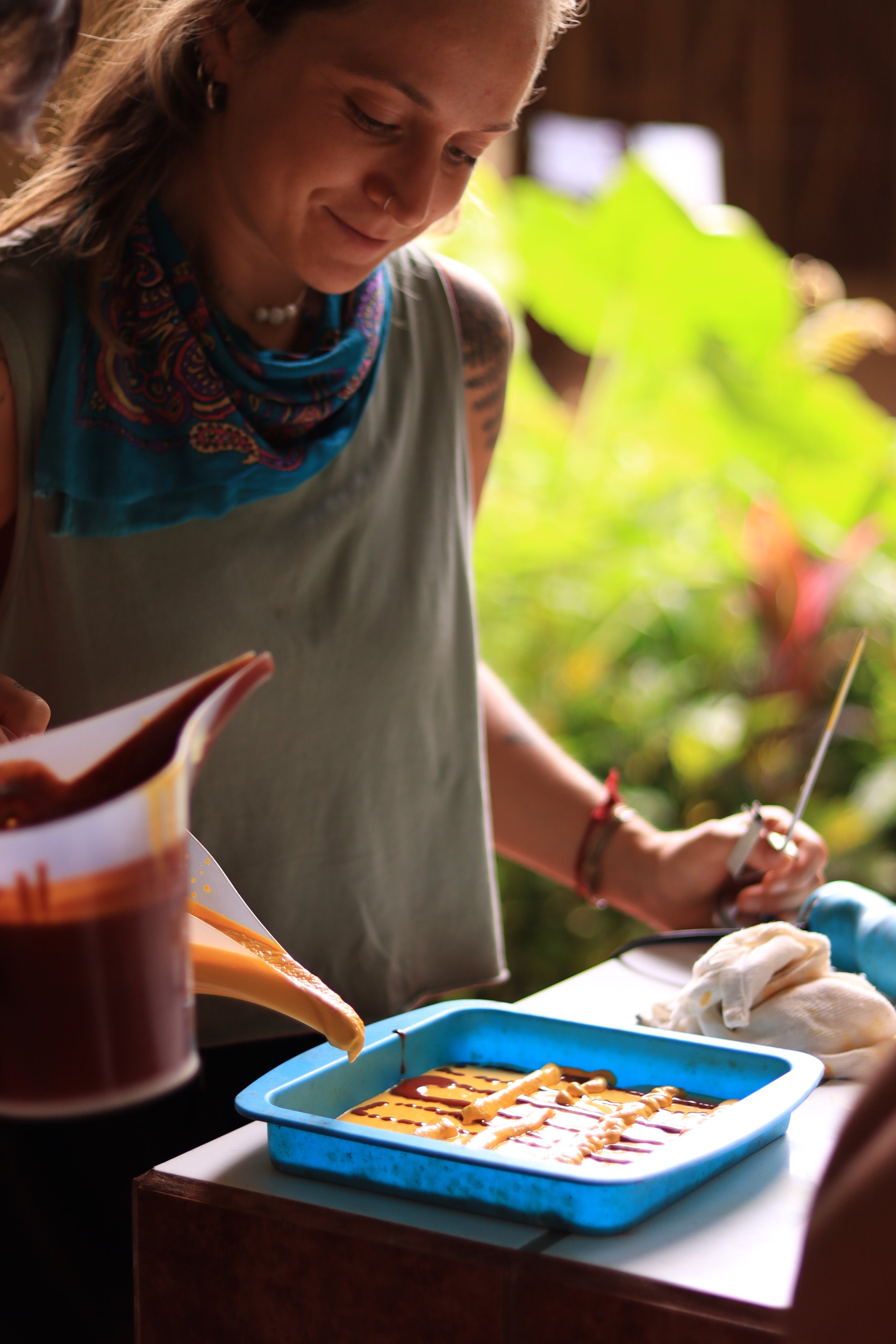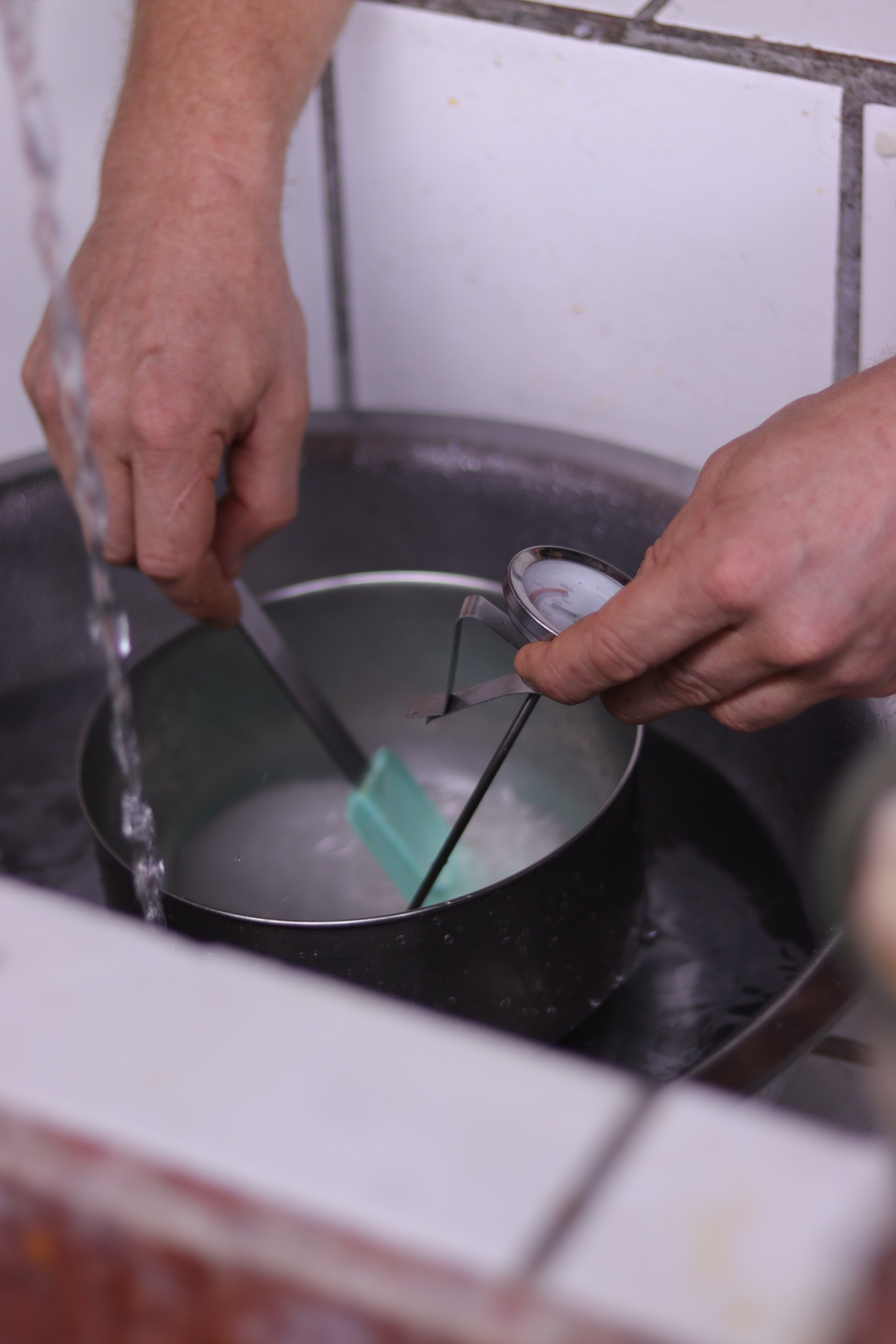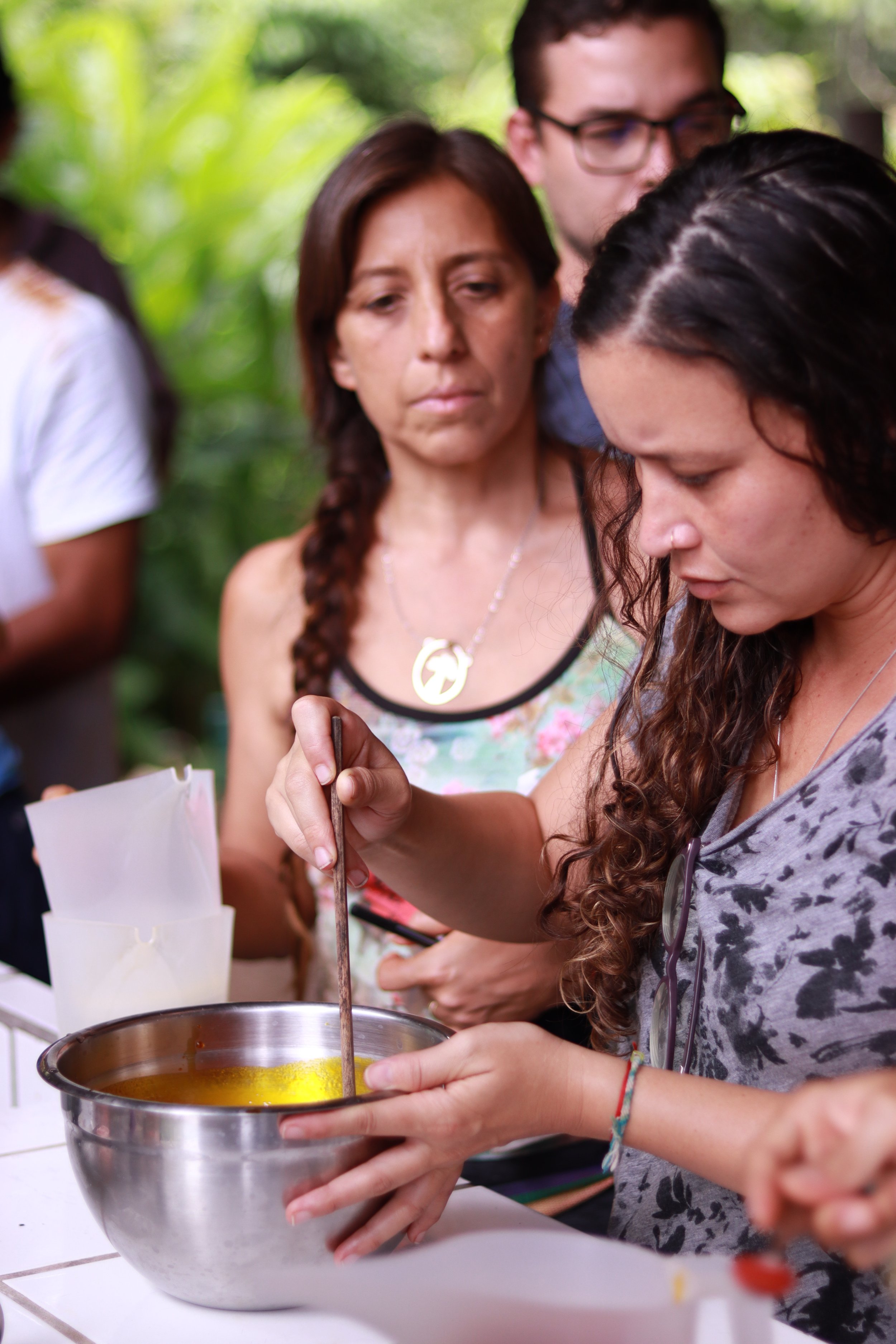How to Make Your Own Homemade Soap
By core team member Ali Ostergard
Story has it that soap was discovered by the women of Mount Sapo, Italy as they were washing in the river and noticed lathery bubbles beginning to form. These bubbles began to form after a volcanic eruption dumped ash into the river that flowed over their ceremonial location where they sacrificed animals to the gods. The combination of ash, animal fats, and water created the lather and bubbles, and what today we know as soap.
Soap, despite what you read on the back of a box of generic soap, is formed by three simple ingredients: sodium hydroxide (lye), fatty acids, and water. So for the town of Mount Sapo the volcanic eruption created ash, which contains sodium hydroxide, which fell into the waters of the river, which then flowed over the ceremonial areas that contained animal fats, the fatty acids, and once these elements all combined they reacted to create a simple soap.
Obviously as time progressed we modified and perfected this soap process and the ingredients. None the less, the process of soap making is still very simple and accessible to every household. If you use soap, which I sure hope you do, there is no reason to not be making it yourself.
WHY MAKE YOUR OWN SOAP
For us here at the Ranch we have three primary reasons for making our own soap, both body and dish.
Environmental: Creating your own soap allows you to assure it contains only biodegradable ingredients that aren’t harmful for the environment (especially important if you are using your grey-water to irrigate crops). Also, by making your own soap products you can reduce or even eliminate the packaging waste that comes along with store bought products. Think, everyone says, ‘oh I only use one shampoo bottle a year,’ times that by the millions that do, you end up with a lot of plastic bottles in landfills. Where if you make your own, you can reuse that bottle and reduce your waste.
Personal Health: Did you know that cosmetic companies and products outside the E.U. are not fully regulated by any health department? The rule is the ingredient needs to be proven harmful before it will be taken off the shelf, rather than proven safe before being put on the shelf. What company do you think is going to prove their product harmful…? When you look at the ingredients on the back of any cosmetic product, including soaps, the list is very long and full of words that can barely be pronounced. Our skin is our largest organ, and absorbs what we put on it, so does it seem healthy to be lathering up in something that contains Dimethicone 200/50, Disodium Edta, Stearoxytrimethylsilane, etc… every day? By making your own soap, you can insure the ingredients going into it are safe.
Be a Producer Not a Consumer: Not only is there immense satisfaction in making your own soap and products, but you are moving away from relying on outside sources for your basic needs. We are big believers in this here at the Ranch, not just with soap, but with building your own home, growing your own food, and if you can’t do it then supporting your neighbor that can. Check out our workshops that will help you begin learning how to do more of these basic skills.
WHAT IS SOAP
Soap as mentioned earlier, is made up of our three simple ingredients (lye, fat, water), that when combined go through a chemical reaction called saponification. There is some basic chemistry that happens here, that I’m not going to go into too much, but basically the process of saponification is the reaction that occurs when our lye water is combined with the fatty acids, and this process creates soap.
A soap molecule is made up of a hydrophobic end (water repelling) and a hydrophilic end (water loving). The hydrophobic end grabs onto the dirt and grime, and the hydrophilic end grabs onto the water and washes that dirt away.
Soap is not naturally antibacterial. It simply works by washing away the dirt, bacteria, etc off the surface. There is a lot of new studies to suggest that antibacterial soaps are causing more harm than good, and are really unnecessary outside a hospital setting. You can do your research on this topic.
MAKING YOUR OWN SOAP
Here at the Ranch we have been making our own body and dish soaps since the beginning. This skill is something we teach to our apprentices, school groups, and in our Permaculture Design Course. We truly believe it is something that everyone can do!
Equipment
Digital scale (accuracy is important)
Thermometer
Stainless steel or glass bowls
Emersion blender (you can do this by hand, but depending on the oils you use this step could take a while)
Spatula
Soap mold
Eye and hand protection (glasses and gloves)
Ingredients
Sodium Hydroxide (also known as lye)
Fatty acids (almost any oil can be used, this is where you can be creative)
Water
Additives: salt, exfoliants like oats or coffee grounds, essential oils, milk, honey, clay, pigments, dried flowers, etc…
Fatty Acids or Oils
You can use a variety of different oils to make your soap; the important thing to note is that each oil has a different amount of lye needed for saponification to happen. I’m going to give the recipes we use for our bar and dish soap using the oils we use, but if you are to use different oils, you will need to change the recipe. There are good online recipe calculators; one we use often is thesoapcalculator.com.
A quick note on the oils we use and why, because that also goes into our ethics as an organization and meeting those when making soap.
Lard: lard makes an excellent soap; it creates a lathery, creamy, and hard soap. But, we mainly use lard because it is produced locally in the next town, we get the second rounds of lard that have already been used in the restaurants, meaning we are using a byproduct that would usually just be thrown out. Some people find this gross, but I find it super amazing! You are taking a product that would be thrown out and making it into something useful again. AMAZING! Food for thought, check out our blog about lard and why we are big fans.
Palm oil: this very controversial oil is also great in soap making. Why we use it? Again it is produced locally down the road, somewhere that isn’t contributing to new deforestation. Of all the vegetable oils, palm oil is the most productive and yielding. If you are going to deem palm oil bad, I would ask yourself what about coconut oil, sunflower oil, soy oil, or any mono culture crop that is essentially grown and produced in the same way.
Coconut oil: also produced locally, we get ours from a small family operation. We don’t put this in our dish soap, as it is much more expensive to use on such a large scale (we go through a lot of soap).
We get all these oils in reusable containers that we send back to be refilled, reducing our waste.
The list of oils you can use is large, pretty much anything that is considered a fatty acid can be used. I would encourage you to find a local oil source.
Short list of oils that can be used: avocado, canola, vegetable, olive, cacao butter, shea butter…
Recipes:
Bar Soap
188 grams coconut oil
375 grams lard
188 grams palm oil
188 grams water
108 grams lye
1 tsp. salt
Dish Soap
500 grams lard
500 grams palm oil
300 grams water
137 grams lye
1 tsp. salt
Instructions
Measure out all your ingredients into separate containers.
Heat your oils to between 110-130 degrees Fahrenheit.
Add the salt to the water and then add the lye to the water, stirring constantly to make sure it doesn’t stick on the bottom. Lye is very caustic and will burn if it gets on your skin. Wearing eye protection and gloves is recommended. The lye water solution will heat up quickly and begin off gassing, so keep your head away from directly over the bowl and do this in a ventilated area. You need to cool the lye water solution down to between 110-130 degrees Fahrenheit.
You want your oil and lye water to be at the same temperatures. Once they are both within a few degrees of each other (between 110-130 degrees Fahrenheit), pour the lye water into the oil and stir.
Using the emersion blender begin slowly blending this solution, being careful not to splatter the mix on your skin or in your eyes.
You are now looking to get the solution to a light trace. Meaning when you drizzle some on the surface the lines are visible on the surface.
Once you have reached a light trace you can then pour the mix into your molds.
Wait 48 hours to pop your soap out of the mold.
Place in a ventilated area and let it cure for minimum 3 weeks before using.
This version of soap making is called ‘cold process’, there is also a ‘hot process’ that involves slow cooking the ingredients which speeds up the saponification and curing time. To make liquid soap is another process and uses potassium hydroxide.
You can get super fancy and add fragrances, put in additives, and make pretty designs. I would do a couple simple batches before advancing to these. But in no time you will have perfected the process and be ready to make some gorgeous, sustainable, and luxurious soap.
Soap and permaculture go hand in hand. Making our own soap meets our environmental and sustainable goals, and beginning to do things for ourselves instead of relying on the big companies. Join us for one of our Permaculture Design Courses where we will have a class on soap making along with natural building, fermentation, soil building, and more.
Happy soap making!








